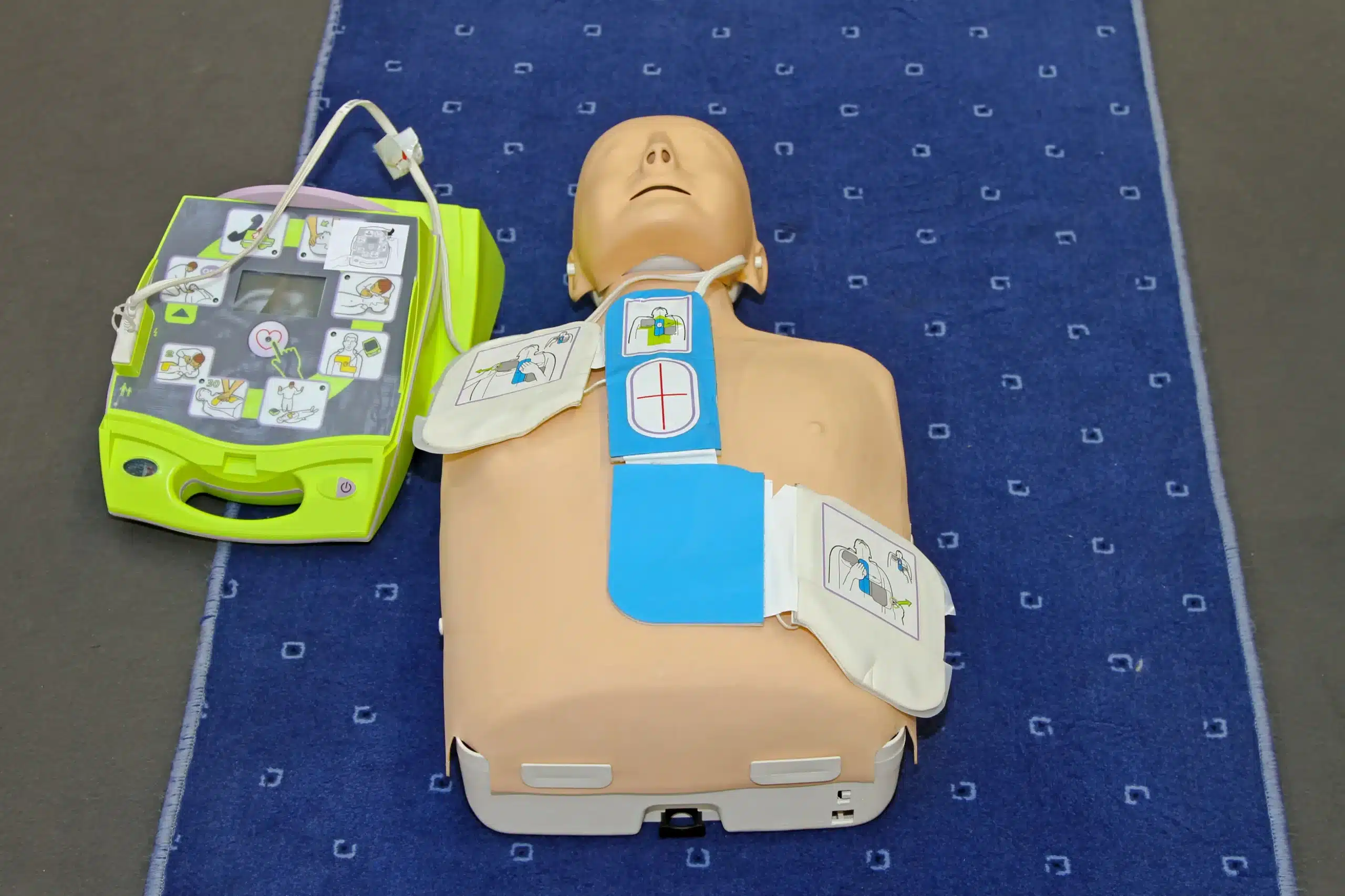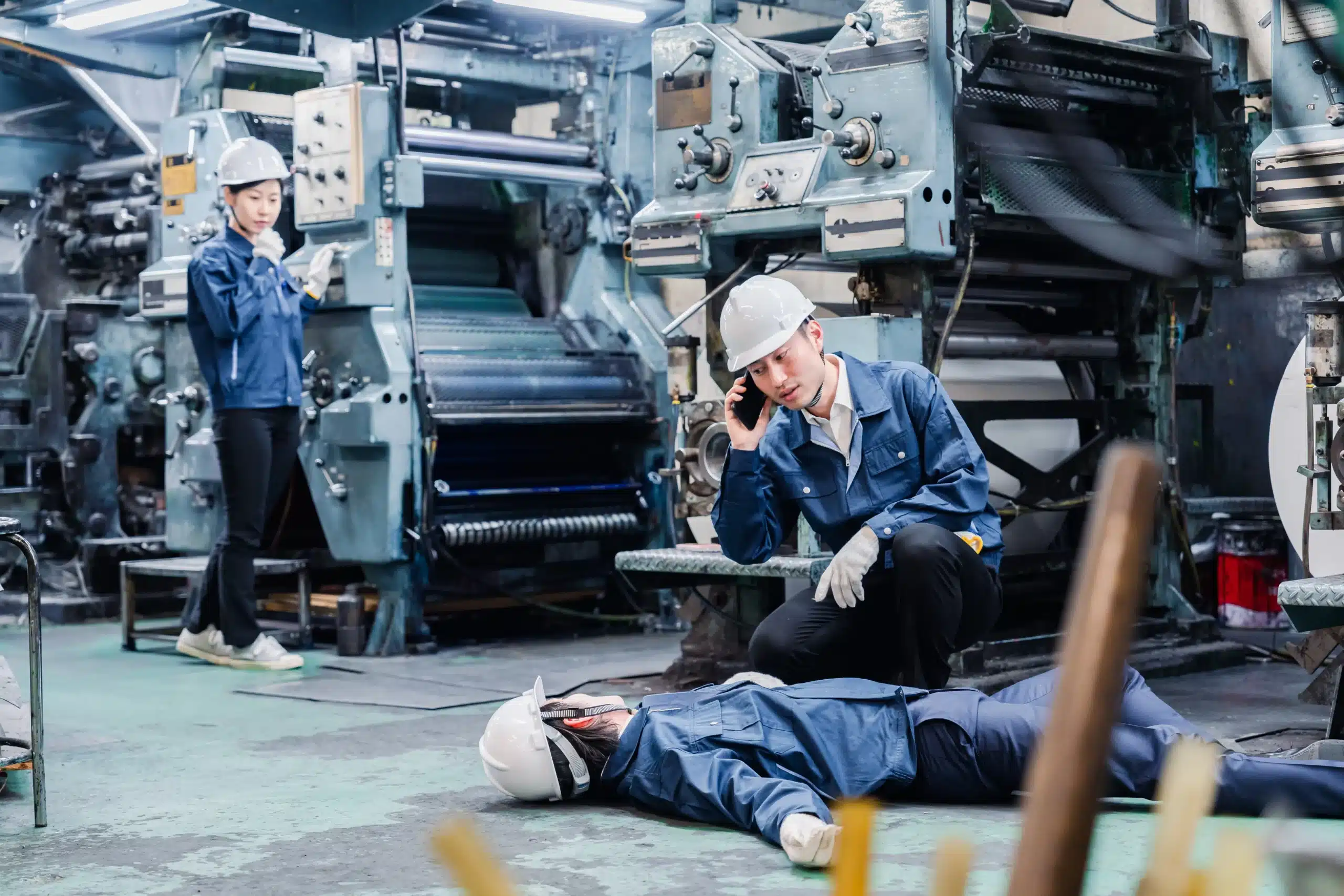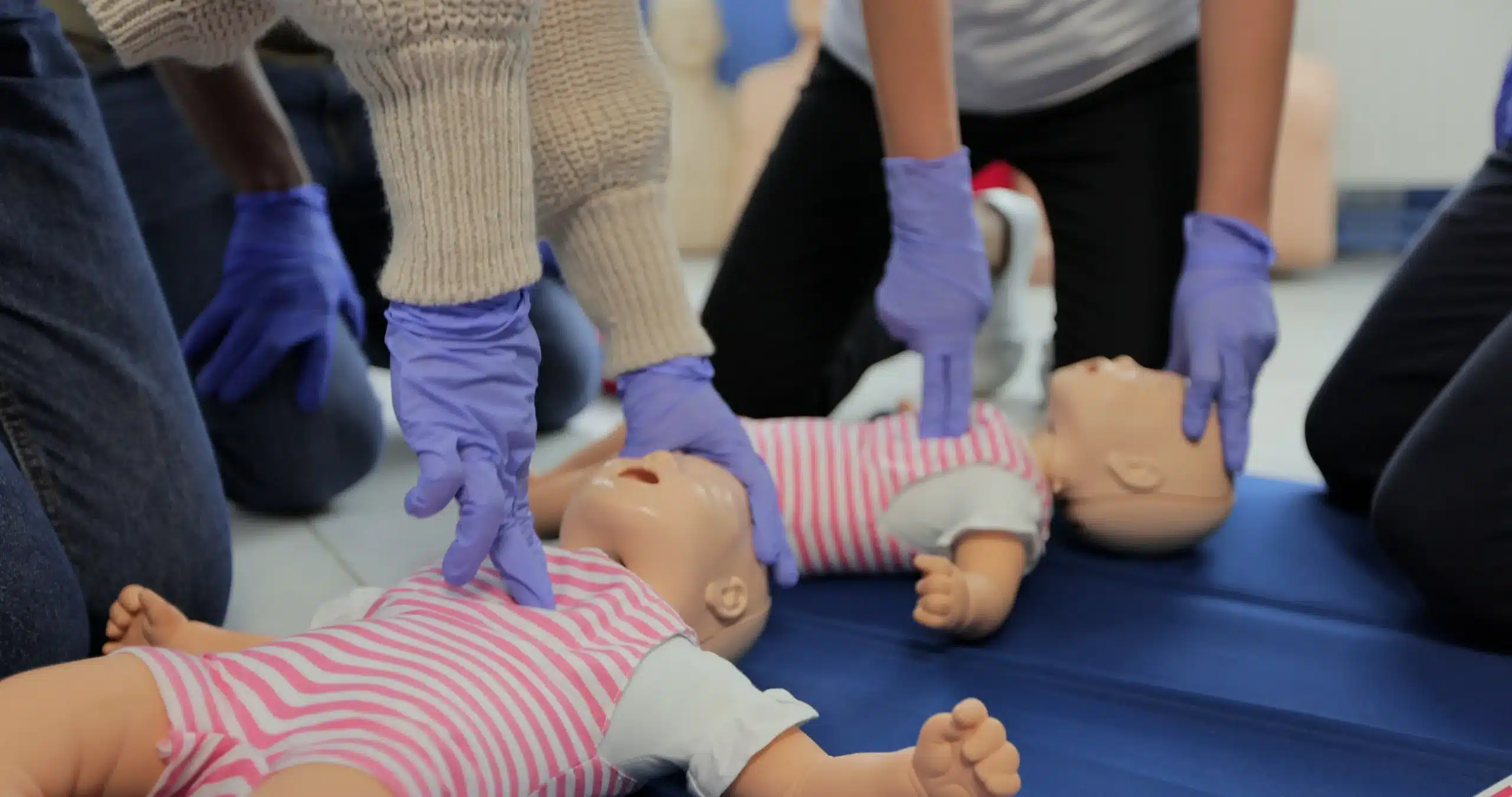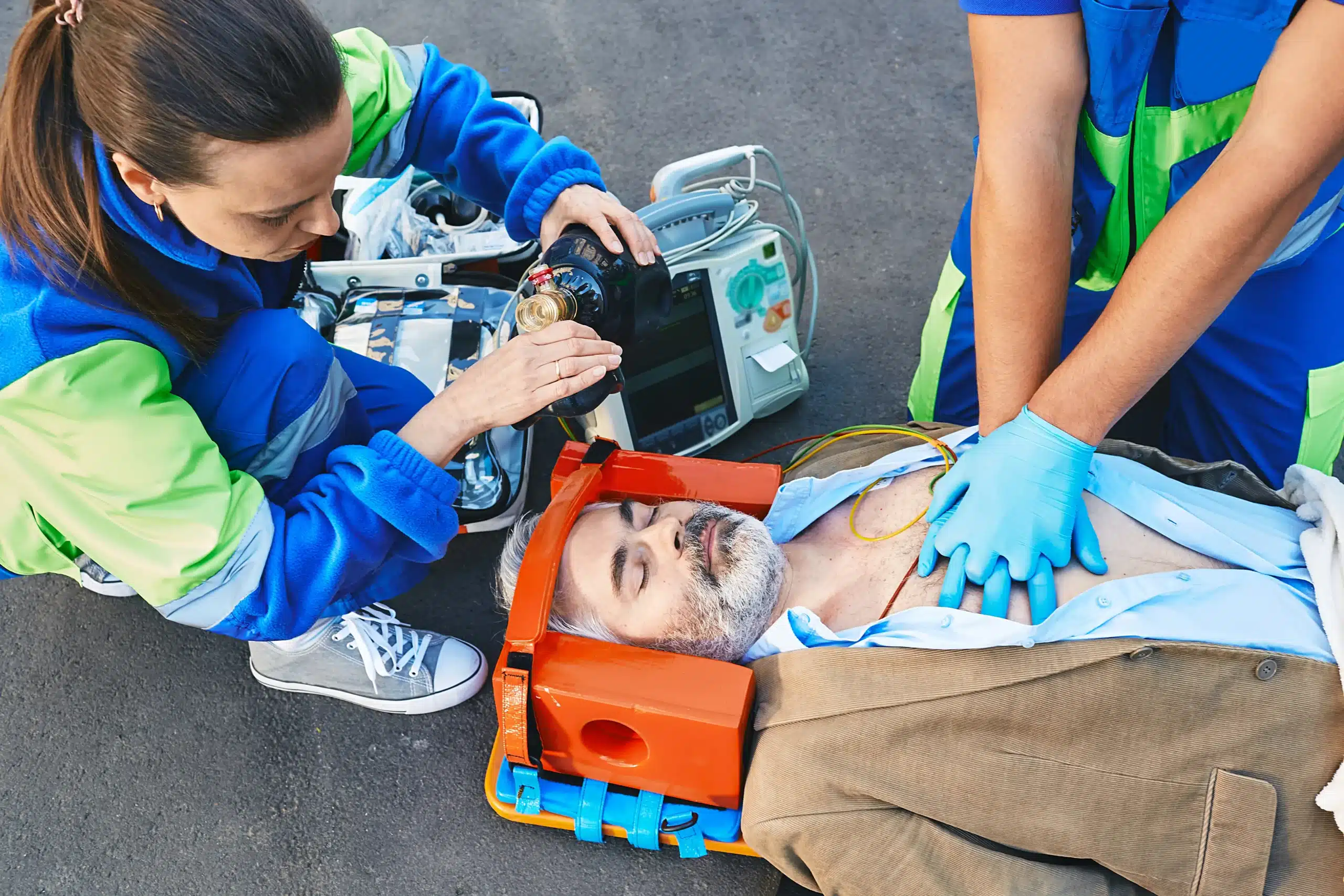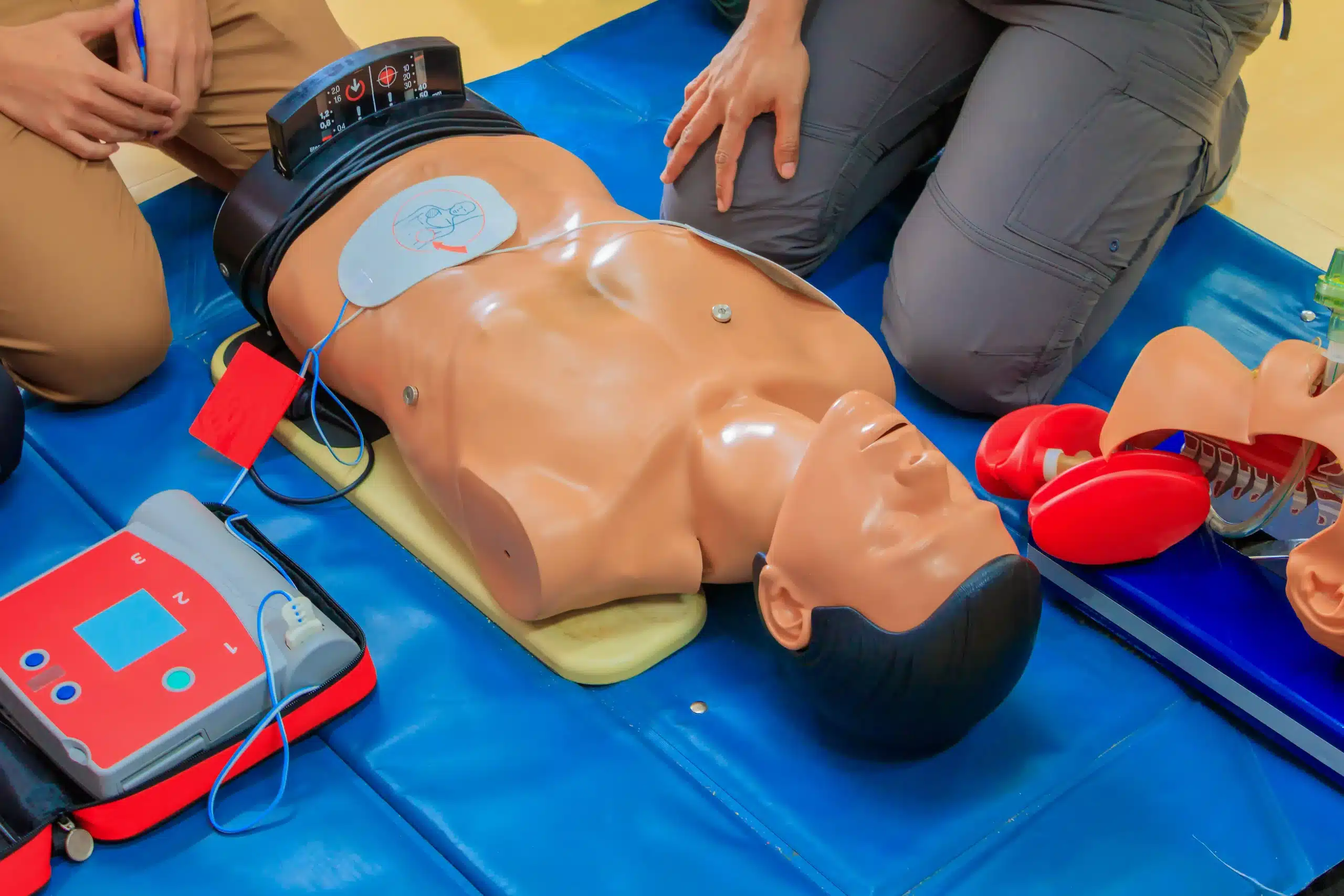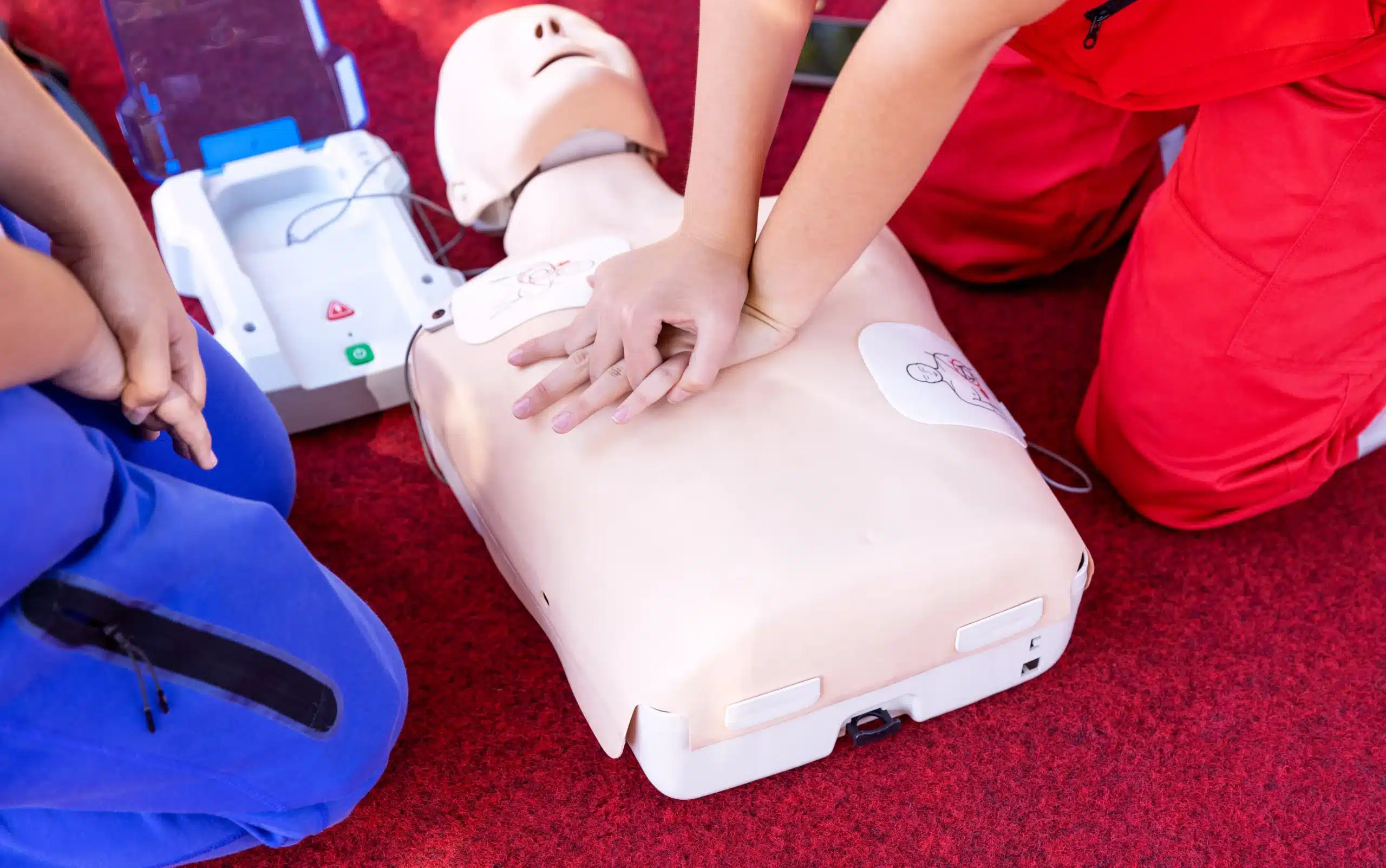Life-saving skills like CPR and using an AED are essential, especially in healthcare and other professions that involve working with the public. But these skills fade if you don’t keep them fresh. That’s where BLS recertification comes in. This guide is your one-stop resource for navigating the BLS recertification process. Whether you’re searching for “bls recertification near me” or exploring online options, we’ll cover everything from the basics to finding the perfect course. Let’s ensure you’re always prepared to provide the best possible care in any situation.
Key Takeaways
- Regular BLS recertification keeps your life-saving skills sharp: Refresher courses ensure you’re confident and prepared for emergencies, using the most current and effective techniques. Explore various course formats—online, in-person, or hybrid—to find what suits your needs and schedule.
- Finding the right course requires research: Compare providers, considering factors like cost, location, format, and accreditation. Organizations like the American Heart Association and the American Red Cross offer reputable, widely recognized training.
- Maintaining BLS competency is a continuous commitment: Beyond recertification, stay updated on the latest guidelines, regularly practice your skills, and seek opportunities to apply your knowledge. This ongoing effort ensures you’re always ready to respond effectively.
What is BLS Recertification?
What is BLS & Why Recertify?
Basic Life Support (BLS) comprises life-saving skills essential for healthcare providers and first responders. These skills, including CPR, AED use, and choking relief, are the first line of defense in medical emergencies. BLS certification demonstrates that you possess these critical skills, but maintaining proficiency requires regular recertification. Think of it like renewing your driver’s license—it proves you’re still up-to-date and qualified. Similarly, BLS recertification validates your continued ability to perform life-saving procedures. Why is recertifying so important? Medical guidelines and best practices are constantly evolving. Recertification ensures you stay current with the latest techniques and protocols, maximizing your effectiveness in emergencies. For healthcare professionals, BLS recertification is often a job requirement, demonstrating a commitment to patient safety and high-quality care.
Stay Current with BLS
Staying current with BLS isn’t just about checking a box; it’s about maintaining a high standard of care. Regularly reviewing BLS guidelines, which are updated based on the latest research, ensures you’re using the most effective techniques. When you recertify, you refresh your knowledge of these guidelines and refine your practical skills. This ongoing learning builds confidence and prepares you to handle real-world emergencies effectively. Plus, understanding the specific requirements for your profession, like required course formats or continuing education credits, will make the recertification process smoother. Knowing what to expect, from course content to pricing, helps you plan and choose the right BLS recertification course for your needs.
Find BLS Recertification Courses Near You
Ready to recertify your BLS skills? This section will guide you through finding the perfect course, whether you prefer the convenience of online learning or the hands-on experience of in-person training. We’ll cover reputable providers and helpful online resources to simplify your search.
Top BLS Recertification Providers
Several well-known organizations offer high-quality BLS recertification courses. Here are a few to get you started:
American Heart Association
The American Heart Association (AHA) is a leading provider of BLS training, offering various renewal options, including online courses and traditional in-person classes. This flexibility lets you choose the format that best suits your schedule and learning preferences. For those interested in convenient online renewal, explore their online BLS renewal courses.
American Red Cross
The American Red Cross is another trusted name in BLS recertification. They also offer both online and in-person classes, making it easier to find a course that works for you. Their website has resources to help you locate a class and register.
Safety Training Seminars
Safety Training Seminars offers convenient and affordable BLS recertification courses for those in Northern California. They prioritize high-quality training that aligns with the latest AHA guidelines. Learn more about their BLS recertification options and take advantage of their low price guarantee.
National CPR Foundation
The National CPR Foundation provides BLS recertification courses designed for healthcare providers. Their training addresses a wide range of medical emergencies, preparing you for diverse real-world situations. Visit their website for more information on their BLS renewal and recertification programs.
ProCPR
ProCPR offers online BLS recertification courses tailored for healthcare professionals. This online format provides flexibility and convenience, allowing you to renew your certification on your own time. Explore their online BLS recertification courses to find the right fit.
Use Online Directories & Search Tools
In addition to these providers, online directories and search tools can help you discover BLS recertification courses near you. When using these resources, consider factors like course format, certification requirements, and associated fees to ensure the course aligns with your needs and budget. Our Northern California CPR directory offers a comprehensive list of local training centers. For any questions or assistance, don’t hesitate to contact us.
Compare In-Person & Online BLS Recertification
Choosing the right BLS recertification course depends on your learning style, schedule, and budget. Let’s break down the pros and cons of in-person, online, and hybrid learning.
Benefits of In-Person Training
In-person BLS recertification offers a hands-on learning experience ideal for those who thrive in interactive environments. You’ll practice skills like CPR and AED use with instructors providing real-time feedback. This direct interaction clarifies questions immediately and builds confidence in your abilities. Plus, working alongside other healthcare professionals creates a sense of community and shared learning. If you value face-to-face instruction and hands-on practice, in-person training might be your best bet. Choosing an accredited provider like Safety Training Seminars gives you confidence in the quality of your training and ensures your certification is widely accepted. BLS training provides essential, life-saving skills—from CPR and AED use to airway management—equipping you to respond confidently in medical emergencies, whether you’re a healthcare professional or not.
Advantages of Online Recertification
Online BLS recertification offers unparalleled flexibility and convenience. If you have a busy schedule or limited access to in-person classes, online learning allows you to study at your own pace, anytime, anywhere. Many online courses provide digital materials, interactive exercises, and video demonstrations to reinforce learning. This format is often more affordable than in-person training, making it a budget-friendly option for renewing your certification. Online BLS training courses provide a flexible and convenient option for healthcare professionals or anyone seeking BLS certification. All study materials are included with the purchase.
Hybrid Options
Hybrid BLS recertification combines online learning and in-person skills practice. You’ll typically complete the theoretical coursework online at your own pace, then attend a shorter in-person session to demonstrate your skills and receive your certification. This approach offers flexibility while still ensuring you have hands-on practice with an instructor. Providers like Berkeley CPR Classes offer a BLS course that includes online coursework, a skills test, and your certification card. This class has two parts: Part 1, an online course, and Part 2, an instructor-led skills session. This blended learning style caters to various learning preferences and schedules.
BLS Recertification: Cost & Time
Getting recertified in Basic Life Support (BLS) is a smart move for anyone working in healthcare or regularly interacting with the public. It keeps your skills sharp and ensures you’re ready to handle emergencies. But how much will it cost, and how much time will it take out of your busy schedule? Let’s break it down.
Average Costs & Fees
BLS recertification costs vary based on a few factors. The biggest one? Whether you choose an in-person or online course. Generally, online recertification tends to be more budget-friendly. Think of it this way: online courses have lower overhead costs, which often translates to lower prices for you. In-person classes, while offering hands-on practice, often include costs associated with the physical classroom and equipment. Location matters too. BLS recertification in a major city might be pricier than in a smaller town. Providers like Berkeley CPR Classes often list their BLS course prices online, giving you a good starting point for comparison.
Course Length & Study Time
The actual course length for BLS recertification is pretty manageable. Most programs clock in at around two to four hours. The beauty of BLS recertification is that it’s a refresher course. You’ve been through the basics before, so the goal is to brush up on existing skills and learn any updated protocols. This means the study time involved is usually minimal. A quick review of the American Heart Association guidelines before class is usually all you need. Some providers offer blended learning options that combine online modules with in-person skills sessions, giving you flexibility in how you approach your recertification. Safety Training Seminars offers a variety of courses to fit your needs.
Scheduling for Busy Professionals
We get it – you’re juggling a lot. Fortunately, BLS recertification courses are designed with busy professionals in mind. Many providers offer weekend and evening classes, both online and in-person, to accommodate various schedules. Look for providers who prioritize convenience and offer a range of scheduling options. Choosing a reputable, accredited provider is key. It ensures your certification meets the highest standards and is recognized by employers and organizations. Plus, a streamlined recertification process means less time away from your other commitments. Contact Safety Training Seminars to find a course that works for you.
BLS Recertification Requirements
Certification & Documentation
BLS certification is essential for many healthcare professionals, as well as other professionals like lifeguards and fitness instructors, who regularly use these emergency care skills. Your BLS certification is valid for two years, and there’s no grace period after it expires. Staying current with your recertification is essential. Renewal requires completing a BLS course and passing an exam. The American Heart Association (AHA) offers a few ways to renew your BLS card, including convenient online courses and traditional in-person classes. Explore the various options to find what works best for your schedule and learning preferences. After you successfully complete the course, you’ll receive an updated BLS certification card.
Considerations for Healthcare Providers
Recertification in Basic Life Support (BLS) is especially critical for healthcare providers. It ensures they maintain the skills and knowledge necessary to respond effectively during emergencies. Given the high-stakes environment of healthcare, staying up-to-date with the latest BLS protocols is crucial. When you’re planning for your BLS recertification, consider factors like course format, your current certification status, and any associated fees. Understanding these elements will help you prepare and budget effectively. Our low price guarantee helps ensure you’re getting the best value for your recertification. We also offer the innovative American Heart Association RQI program for a fast and efficient certification process. Contact us to learn more about how we can help you meet your recertification needs. We’re proud to serve several areas in Northern California, including San Francisco, San Jose, Oakland, Sacramento, Berkeley, and Concord. You can find more location information in our Northern California CPR directory.
Choose the Right BLS Recertification Course
Picking the right BLS recertification course involves a few key steps. Think about what you need, the credentials that matter to you, and how the training fits your career goals.
Factors to Consider
First, think about the practicalities. BLS recertification requirements vary based on location and course type. Additional fees can also pop up, so compare pricing. Our low price guarantee helps you find the best value. If your certification has lapsed, you might need to retake the full BLS course.
Accreditation & Recognition
Choose training from a recognized provider. An accredited provider like Safety Training Seminars ensures your training meets industry standards and your certification is widely accepted. The American Heart Association (AHA) offers several renewal options, including online and in-person classes. We offer the convenient RQI program for fast and efficient certification.
Match Your Professional Needs
BLS training gives you essential skills to handle medical emergencies. Whether you’re a healthcare professional or not, you’ll learn CPR, AED use, and airway management. These skills empower you to confidently respond in a crisis. BLS recertification is especially important for healthcare providers, ensuring they’re always prepared. If you’re in Northern California, check our CPR directory to find a convenient course. Contact us with any questions.
Prepare for BLS Recertification
Getting ready for your BLS recertification? Whether you’re a seasoned healthcare professional or renewing your certification for the first time, adequate preparation is key. Let’s break down how to get ready.
Review Materials & Guidelines
Before your recertification course, review the latest BLS guidelines. The American Heart Association (AHA) offers resources and updated materials covering everything from CPR techniques to using an AED. Familiarizing yourself with these guidelines ahead of time will make the recertification process smoother. It’s also a good idea to check with your employer or certifying body for any specific requirements. Recertification requirements can vary based on factors like your location and the type of course you take. This can impact cost, so it’s wise to understand these variables early on.
Practice Essential Skills
BLS recertification courses aren’t just about reviewing the material; they’re about confidently performing life-saving skills. Hands-on practice is crucial. If possible, refresh your skills with a CPR manikin before your class. This will help you feel more comfortable and prepared for the skills testing portion of the recertification process. BLS recertification reinforces your training on responding to medical emergencies, so practice is key.
Tips for Success
Here are a few additional tips to help you succeed with your BLS recertification:
- Choose an accredited provider: Selecting a reputable provider like Safety Training Seminars ensures your certification is widely recognized and accepted. This is especially important if you’re seeking recertification for specific professional requirements.
- Ask questions: Don’t hesitate to ask your instructor any questions during the course. Clarifying any doubts will boost your confidence and deepen your understanding.
- Stay updated: BLS guidelines and protocols can change, so commit to continuous learning even after you’ve recertified. Resources like those from the Red Cross can help you stay informed. Consider subscribing to newsletters or following relevant organizations on social media. Staying current with the latest guidelines will not only help you provide the best possible care but also make your next recertification easier. For affordable and convenient options, check out our low price guarantee. We offer a variety of courses, including our fast and efficient RQI program. Contact us to learn more and find a course that fits your schedule and budget.
Maintain Your BLS Skills
Once you’re BLS certified, commit to ongoing learning and skill maintenance. It’s not a one-and-done deal. Regularly refreshing your knowledge and skills is crucial for providing effective care when it matters most.
Continuous Learning
Think of BLS recertification as a chance to fine-tune your skills and stay sharp. It offers significant advantages, from improved resuscitation techniques and high-quality chest compressions to confidently assessing someone’s need for immediate BLS. Ultimately, staying current increases the chances of positive outcomes in emergencies. Consider subscribing to newsletters to stay informed about the latest advancements in BLS. Even something as simple as periodically reviewing the American Heart Association’s BLS guidelines can make a difference.
Apply BLS Knowledge
Your BLS training equips you with essential, life-saving skills, from CPR and AED use to airway management. These skills empower you to respond confidently in medical emergencies, whether you’re a healthcare professional or not. Look for opportunities to apply your knowledge in real-world scenarios, such as volunteering at community events or participating in mock drills. This practical experience reinforces your training and builds your confidence.
Stay Updated on BLS Protocols
Medical best practices are constantly evolving. Recertification ensures you’re up-to-date on the latest BLS protocols and guidelines. This is vital for delivering effective care during emergencies. Staying informed about changes in CPR techniques, ventilation rates, and other essential procedures can significantly impact patient outcomes. Resources like our Northern California CPR directory can help you find local providers offering the most current training. Remember, maintaining your BLS skills is a continuous process.
Related Articles
- BLS Courses in Oakland: A Certification Guide
- BLS Renewal in Concord: Your Complete Guide – San Francisco Bay Area CPR Classes
- BLS Classes in San Francisco: Your Complete Guide – San Francisco Bay Area CPR Classes
- Basic Life Support (BLS) in Berkeley CA: Top Courses
- BLS Classes in Oakland: A Complete Guide
Frequently Asked Questions
How often do I need to recertify my BLS certification? BLS certification is typically valid for two years. It’s essential to recertify before your current certification expires to maintain your credentials and ensure your skills are up-to-date. There’s no grace period, so plan ahead.
What’s the difference between online and in-person BLS recertification? Online recertification offers flexibility, allowing you to learn at your own pace and often at a lower cost. In-person classes provide hands-on practice and direct interaction with instructors. Consider your learning style and schedule when choosing the best format for you. Some providers offer hybrid courses that combine online learning with in-person skills sessions.
How much does BLS recertification cost? The cost varies depending on the course format (online or in-person), location, and the training provider. Online courses tend to be more budget-friendly. Check with specific providers for their pricing and compare options to find the best value. Look for providers who offer a low-price guarantee.
What if my BLS certification has already expired? If your certification has lapsed, you’ll likely need to retake the full BLS course rather than just a recertification course. Contact your preferred training provider to confirm their requirements and available course options.
How can I find BLS recertification courses near me? Use online directories, search tools, or check the websites of established providers like the American Heart Association, American Red Cross, or Safety Training Seminars. Look for courses that fit your schedule, budget, and preferred learning format. Consider factors like accreditation, course content, and instructor experience when making your decision.
